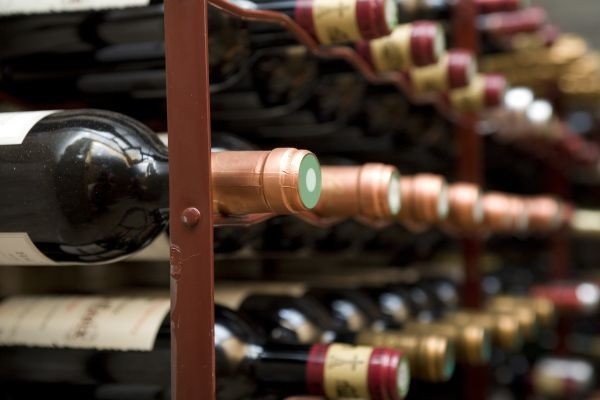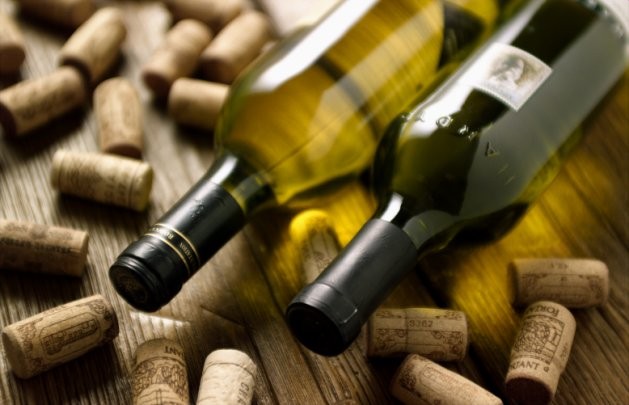Making 10% returns a yea buying more wine Yahoo Finance UK
Post on: 18 Июнь, 2015 No Comment

Related Content
Telegraph — Wed, Aug 14, 2013 12:06 BST
Savings rates are pitiful and the idea of buying stocks and shares is baffling to many – but what about putting money into wine?
It might not sound like a realistic option, but – if you can keep it corked – research from the University of Cambridge and HEC Paris and Vanderbilt University shows that over the past 100 years you would be better off with wine than a whole host of other money-making schemes — and the returns have only got better in recent years.
On top of that, big changes in the industry have made the fine wine market accessible to the average person, rather than millionaires and specialists.
“The wine market (as an asset class) wasn’t that accessible to the general public until 2006/7, it took time and money to invest and wasn’t quite as liquid,” Tom Gearing, founder of wine investment firm Cult Wines. told Yahoo Finance.
“But wine exchanges mean this is changing, and the internet means comparable prices are far more comparable now.”
SAN ANSELMO, CA — OCTOBER 30: Bottles of wine sit on a shelf at Ludwigs Fine Wine and Spirits on October 30, 2013
The advantages of buying wine
Surging demand from places like China and now the US mean that prices have been rising by 10-15% a year recently, seeing wine out-perform shares consistently over the last 15 years. Wealthy buyers from around the world are snapping up prestige wines, and their desire for them is so far independent of global economic downturns.
London’s Berry Bros. & Rudd – Britain’s oldest wine merchants – explains rising prices this way: “The fundaments behind wine investment are relatively simple; fine wine is a tangible asset, it is a luxury product that many aspire to own, consume and know more about.
“Most important is supply, which is limited; the supply of any particular vintage of, say Chateaux Margaux, is constantly diminishing and in the case of younger vintages is constantly improving and so desirability increases.”
What’s more, every time someone opens a bottle to drink it, that supply drops again.
There’s also the tax position – wine is classed as a “wasting asset” as it’s seen as demising in value over a 50-year period. This means it generally doesn’t attract capital gains tax when sold. However, there is a note of caution here. People trading wines day in day out or shifting large volumes might not qualify for this exemption and there are other grey areas.
Chinas Burgundy Demand Leads Future Fine Wine Market Surge
How does investing in wine work?
Investing in wine doesn’t quite work the same way as shares. After all, you’re buying an actual bottle or case of real wine – not depositing money in a bank or buying a share in a company. That means it needs to be stored somewhere.
For investment purposes, most recommend storing it in a bonded warehouse. There are several of these in the UK and they keep the wine safe, secure and in a climate-controlled environment.
Keeping the wine here also means you don’t pay VAT or alcohol duties on your bottle or case of wine when you buy or sell it. If you want to take a bottle from storage and drink it, then these taxes come into play again, but as long as it’s held as an asset then it doesn’t attract either.
The other key reason to store wine in a bonded warehouse is value. No one wants to buy a wine to discover its quality has been affected by incorrect storage – which means not using a bonded warehouse could ruin the value of your investment.
Most bonded warehouses also include insurance as part of the fee, and as you’re buying a physical product this means it can be physically lost or damaged. Storage and insurance tends to cost somewhere between £10 and £25 a year, per case of wine. There’s a list of bonded warehouses, along with fees, here .
Valuing your wine has also become easier recently. Rather than brokers quoting prices, there are now a series of indexes online showing the most recent sold prices of various vintages. The likes of CaveX and WineOwners.com show recent prices and let you buy and sell cases online.
As for working out if you’ve made or lost money, you can use a free portfolio tracking tool — like this one by Cult Wines — this gives you a current valuation and lets you track the ongoing performance of your wines, using the latest sold prices.
Wines stored in bonded warehouses can be sold directly to other people through an index — you can list your wine for sale along with a bid-price and if a buyer matches it the wine will be shipped straight to their bonded warehouse. Members of some exchanges, such as Berry Bros. & Rudd’s will see the wine simply transfer in ownership — while staying in the same warehouse – making the process easier yet again.
Many brokers are also keen to take on wines – although they charge fees both for buying and selling your wine through them.
A bonded wine warehouse (Image: Vine International)
What to buy then?

If you’re investing in fine wine, you need to look at what people are already buying and browse the wine indexes for recent trends. Traditional areas include Bordeaux and Burgundy in France, the ‘Super Tuscans’ of Italy and increasingly wines from California and Australia.
“Look at the estate, critics’ scores, performance of previous vintages — and then look at current market trends. So, for example, Bordeaux wines have been down for the last 18 months. but some champagnes are on the up,” Cult Wine’s Gearing told Yahoo Finance.
Critics scores can be key, with a high-score from Robert Parker. Jancis Robinson. James Suckling or Tim Atkin massively boosting a wine’s value and popularity.
You can also choose to buy wines “En Primeur” – that is to say before they are bottled – where critics taste wines and give their opinions of how good a vintage is likely to be ahead of maturation. It’s higher risk, but it’s also generally cheaper than buying an established vintage and the growth potential is large.
The cost of storage and insurance, even with strong growth, means you need to put a reasonable amount of money in to begin with. Putting less than £500 into buying fine wine isn’t worth it, Gearing explained. “We say £5,000-£10,000 to get a decent portfolio,” he said.
Most people investing in wines are looking for returns over a three to 10 year period, as after that the quality of the product tends to drop off and values dip.
And if all that seems too complicated, there are services that can do the work for you – advising on wines, making the transaction, suggesting when to sell and sorting out a warehouse to store them in — although this doesn’t come free.
“We provide a full package service — so we assess people as investors and then build a wine portfolio that reflects their needs and arrange storage,” Gearing explained.
Wine warehouse (Image: Cult Wines)
Like all purchases, values can fall as well as rise – so no profits are guaranteed when buying wine. Using insurance means you should be covered in case of the wine being damaged, however, with the wine market there is an additional risk.
Buying and selling a physical asset like wine isn’t regulated by traditional financial authorities, which means investors have to be careful when choosing who to buy from.
Fortunately, the Metropolitan Police has produced a checklist, to enable you to be as safe as possible when investing in wine. Here’s their advice :
Buying fine wines: A checklist; what do you know about the company?
- Do they have a good reputation?
- How long have they been in business?
- Where are they based?
- Are their prices competitive?
- What is the provenance of the wine?
- How much are commission, storage or delivery charges?
- Will your wine be stored separately from the company’s wine?
- What documents will you get to provide proof of purchase?
- Is your wine insured?














